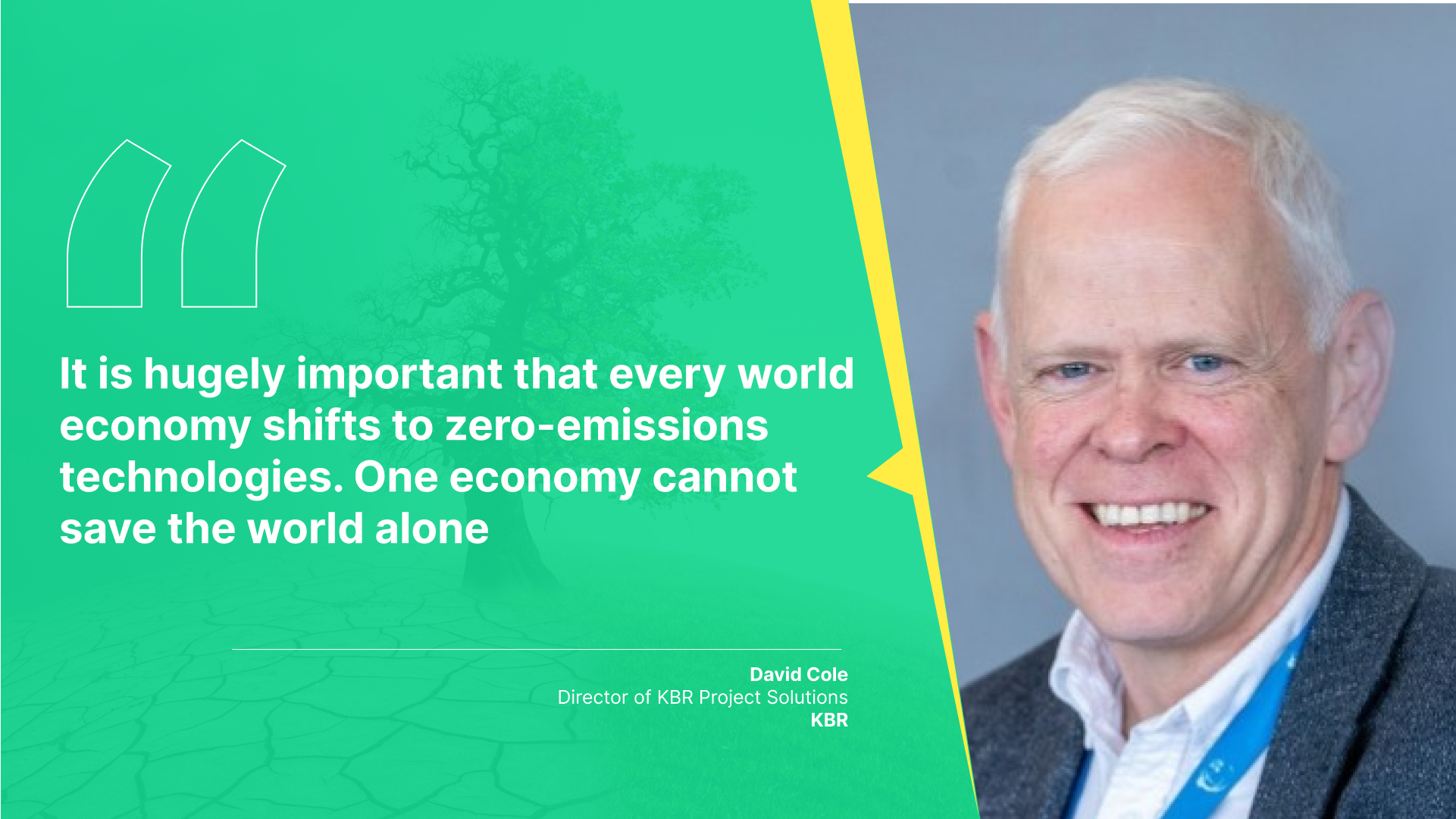To secure a sustainable future, the onus lies on all the world economies; transition to zero-emission technologies has to be widespread and swift, only then can we reverse climate change. During a recent interview with David Cole, Director of KBR Project Solutions, we raised some intriguing questions to gain his valuable insights about the climate change catastrophe, and explored KBR’S role in propelling a world of sustainable energies.
Let us delve into the highlights of the Q&A session.
CTS: Can we sustain the climate change catastrophe anymore, particularly in view of events like glacier melting, global warming, etc that seemed far-fetched before?
Mr David: As brave, intelligent humans we can sustain our lives and communities on earth. The important thing is to identify what we are doing that is harmful for the longevity of the human race. We must leverage our ability to invent and change the impact we are having on the world around us. Controlling a world that will become more and more complex is the largest change mankind faces. Climate change is running away from us but we still have the ability to change our actions and reverse this direction.
Technology is growing faster than our ability to consume it and to change the world we need to change ourselves.
CTS: How important and urgent do you think is the need for world economies to shift to zero-emission technologies?
Mr David: It is hugely important that every world economy shifts to zero-emissions technologies. One economy cannot save the world alone. We need to work together with an increasing level of urgency to deliver these technologies. The drive for zero emissions is being led by numerous pledges and commitments which have been agreed upon across international borders.
The concern is that on close examination the claims don’t stack up versus the actions being taken to deliver those commitments. Companies can't reduce emissions by 30, 40 or 50% when they don’t truly know what they are emitting in the first place. Zero-emission technologies need to grow in a fraction of the time that fossil fuel-based energy took to reach the same level of maturity.
We need detailed, accurate and honest emissions models, across all scopes, that allow us to understand where we really stand and to build an action plan of what we need to do. By manipulating these models only then can we really identify the optimum solution to lower the carbon footprint of any new energy project.
CTS: In your opinion, what would be the scenario of energy systems in the world in the next 20 years; can we anticipate a total takeover of zero-emission technologies?
Mr David: 20 years sounds like such a long time, but when you consider the lifecycle of some of the energy assets currently in operation you'll realise that 20 years will come and go with high carbon intensity energy still being produced. What we will see is the continued decline in emissions intensity, with low emissions solutions taking over. As such, in 20 years' time we will have a much more complex energy environment. An energy environment that is fairer to all communities across the globe; more secure because it is not reliant on a few fossil fuel producing nations; and more sustainable because of the reduced exploitation of our natural resources.
CTS: How important is the role of companies like KBR Project Solutions in propelling a world of sustainable energies?
Mr David: We at KBR Projects Solutions, and every person on Earth, has the responsibility to build a more sustainable world. To propel the sustainability movement forward, KBR Project Solutions has developed a unique emissions model to provide a pathway to deliver lower carbon projects.
Our unparalleled understanding of energy engineering means that our lifecycle carbon model moves the energy landscape from a retrospective world of seeing what emissions have been released, to understanding what future emissions might be released if a design is developed through to operation.
It is only when we understand the full lifecycle - from planning, operating and decommissioning - of an energy facility, and all the possible emissions that creates, that we can truly reduce emissions.
To achieve this and influence the path to net zero, emissions projections need to be developed early and consistently. In this way we can benchmark, simulate and optimise the delivery of low sustainable energy.
CTS: In your opinion, what are the primary drivers of decarbonisation initiatives, and how do you think that events like the London Climate Show can help to promote and accelerate the adoption of zero-emission technologies, and how important is it to showcase these technologies to the public and industry stakeholders?
Mr David: The primary driver of decarbonisation should be to limit climate change to 1.5℃ and as such the achievement of net-zero goals. Unfortunately, the purely environmental, benevolent, basis is often not enough for governments, organisations and individuals to drive decarbonisation to the forefront of the energy landscape.
The drivers are a much more complex mix of technical, financial, environmental, social and political factors that persuade governments to participate, encourage organisations to invest, and convince individuals that decarbonisation is worth the change to their culture, behaviours and attitudes.
Events such as the London Climate Show are key to promoting and accelerating the adoption of zero-emissions technologies. The London Climate Show provides an opportunity to showcase technology.
This is a pivotal opportunity for technology to be understood, business and financial benefits realised, political opportunities seized, and decarbonisation technologies adopted. This is more important than ever for zero-carbon technologies where the rate at which technologies reach an acceptable readiness level and maturity must be quicker than ever before if we are to hit net zero in 2050.

